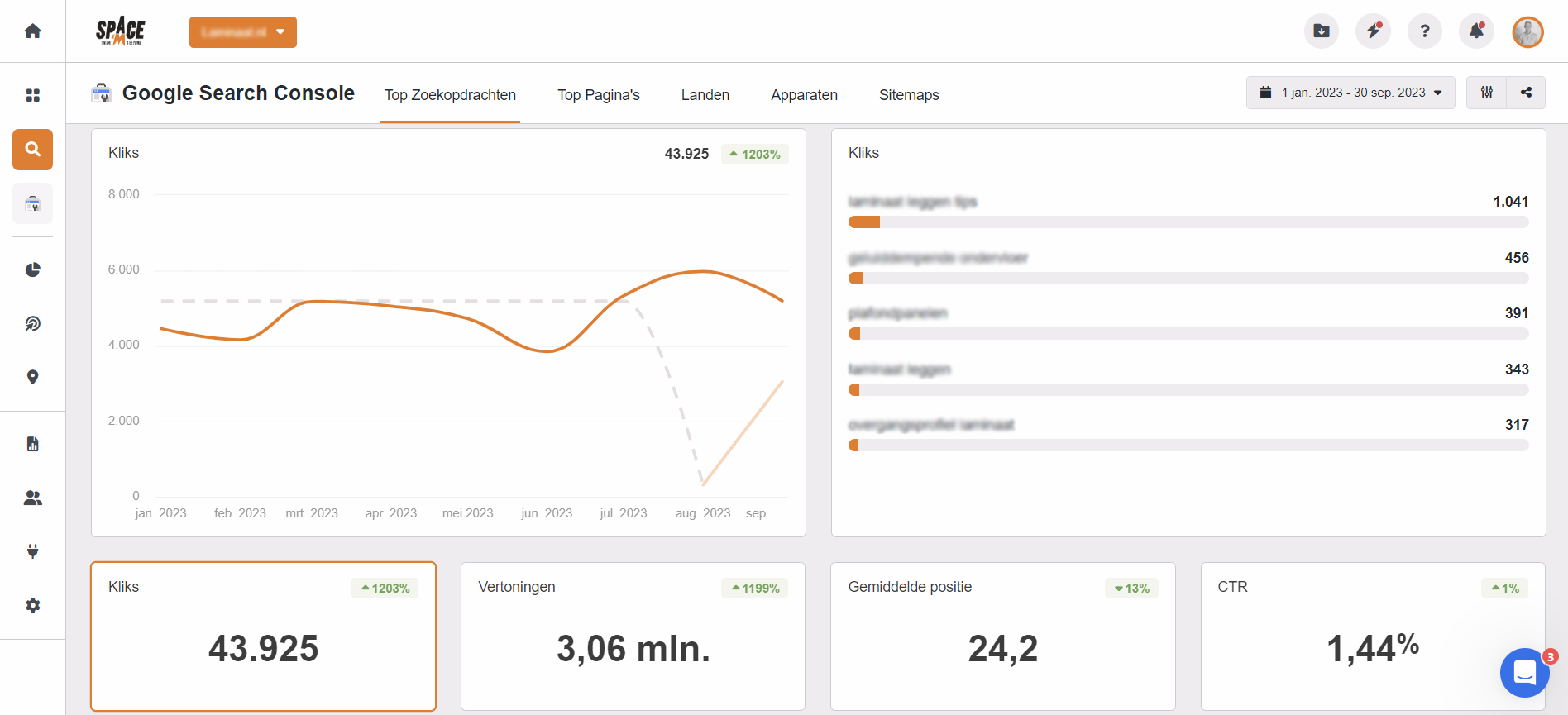When your company decides to expand its online presence to international markets, you quickly face a crucial decision: should you use a subdomain or a subfolder for your multilingual websites?
The choice between using subdomains or subfolders can significantly impact search engine optimization (SEO) and thereby the success of the website in different countries. The global discussion among SEO experts about which of the two is best is intense, especially because Google approaches both methods differently.
This article aims to shed light on this topic, explain the differences between subdomains and subfolders, and advise which option is best for international SEO.
Subdomain vs Subfolder: What are the Differences?
To make the best choice between a subdomain or subfolder, it is essential first to understand the differences. While both methods are used to organize and expand a website’s structure, Google approaches them from an SEO perspective in different ways.
This difference in approach can affect how your website’s content is indexed and ranked in search results. Therefore, the choice between a subdomain or subfolder depends on the type of website expansion you want to implement.
Generally, subfolders are preferred for SEO because they maintain and strengthen the authority of the main domain. In contrast, subdomains are seen by Google as separate entities, which can result in a fragmentation of domain authority. However, in certain situations, subdomains can be advantageous, depending on the specific goals and structure of your website.
What is a Subdomain?
A subdomain is a separate section of the main domain that can act as a unique entity. It is placed in the URL before the main domain and is separated by a dot. For example, in the URL ‘blog.example.com’, ‘blog’ is the subdomain of ‘example.com’.
Subdomains are useful for organizing a website into logically separated parts, each serving a specific purpose. For instance, subdomains can be used for:
- Hosting a blog or a news section separate from the main website (blogs.example.com);
- Creating a members area or a forum (forum.example.com);
- Setting up a separate online store (shop.example.com).
Using subdomains allows each section of the website to be optimized for search engines with a specific focus, independently from the rest of the website. This can be advantageous for businesses with diverse product lines or services that have little overlap.
However, it is important to note that each subdomain can be considered a separate entity by search engines, which may lead to a fragmentation of domain authority and link value across the different subdomains.
What is a Subfolder?
A subfolder, also known as a subdirectory or submap, is a directory within the main domain of a website that helps organize the content in a structured hierarchy. For example, in the URL ‘example.com/blog/’, ‘/blog/’ is a subfolder of the main domain ‘example.com’.
Unlike subdomains, subfolders maintain the authority of the main domain and enhance it by keeping all content under a single entity. Subfolders can be used for:
- Organizing content around certain themes or topics within the main website (example.com/category/);
- Setting up a knowledge base for articles or blogs related to the main topic of the site (example.com/knowledgebase/);
- Creating country- or language-specific versions of pages within the same website (example.com/en/).
Choosing subfolders can contribute to stronger domain authority because all backlinks pointing to the subfolders transfer the SEO value directly to the main domain. This makes subfolders particularly valuable for SEO purposes, especially when the goal is to improve the overall visibility of the website in search engines.
Because subfolders are considered part of the main website, they can also benefit from the existing domain authority without the need for additional effort to build it up, as is often the case with new subdomains.
When to Use a Subdomain and When a Subfolder?
If all goes well, you are now familiar with the differences between a subdomain and a subfolder. The choice between using a subdomain or a subfolder strongly depends on the intended purpose of the website expansion.
The use of subdomains is particularly suitable when you want to make a clear distinction between different parts of your website that have little to no overlap. This could be the case when offering different product lines or services that each require a unique brand identity, or when specific technical requirements necessitate a separate management environment.
Subdomains offer the flexibility to treat each segment as a quasi-independent entity, which can result in a more organized and focused user experience, also contributing to the overall SEO of a website. Google’s algorithm is becoming smarter and is increasingly better at assessing the overall user experience (UX).
On the other hand, subfolders are often the better choice when the added content is directly related to the main activities or services of a website. The use of subfolders helps to strengthen the SEO value and authority of the main domain because all links and content remain under the same domain.
This is particularly advantageous when setting up a multilingual website, where each language version can be managed efficiently as part of the same domain without the need for separate management systems. The structure that subfolders provide not only helps keep your website organized but also supports domain authority and SEO performance by not dispersing the accumulated value across different subdomains.
Which Option is Better for a Multilingual Website?
Setting up a multilingual website brings several challenges, including whether to use subdomains or subfolders is preferred. Take, for example, a company that wants to expand its website abroad by translating all existing pages.
A common concern is whether Google sees it as a negative to have different languages on one website. Before we answer this question, it is important first to consider another question: how does Google identify the language and location of web pages? The answer to this question plays a crucial role in determining the best structure for a multilingual website.
How Does Google Identify the Language and Location of Web Pages?
Google uses various methods to identify the language and location of web pages, which is essential for correctly indexing and presenting content to users in different regions.
One of the primary methods is the Top Level Domain (TLD) of the website. For example, a .nl domain indicates that the website is likely aimed at a Dutch-speaking audience, while a .fr domain points to a French target group.
In addition to TLDs, Google also uses automatic language recognition to analyze the content of a page and determine in which language it is written. This technology enables Google to accurately identify a wide range of languages, even if the language differs from the website’s TLD.
Furthermore, Google looks at an attribute in the HTML of a specific page to determine what language it is and to which country the page is targeted. Website administrators can indicate in which language a particular page is written using this so-called hreflang tag attribute.
Hreflang Tag Attribute
The hreflang tag attribute plays a fundamental role in the world of international SEO, especially for websites that offer content in more than one language. This attribute is used in the HTML of a page to inform search engines like Google about the language and geographic targeting of a web page.
The purpose of the hreflang attribute is to assist in correctly displaying search results to users based on their language preferences and location, thereby improving the relevance of the search results. Furthermore, it prevents pages from being incorrectly indexed and ranked in the search results.
Placing an hreflang tag occurs in the <head> section of an HTML page. An example of what an hreflang tag looks like for an English version of a page on a Dutch website would be: <link rel=”alternate” hreflang=”en” href=”https://www.example.nl/en/”>.
This tells Google that the specific page is an English version for English-speaking users, while other hreflang tags can specify other language versions of the same content. Correct use of the hreflang attribute ensures that users see the content in their preferred language, even if multiple language versions of that content are available on your website.
This is not only beneficial for the user experience, but it also helps prevent problems with duplicate content, where the same content in different languages may be considered duplicate by search engines. Therefore, the hreflang attribute is an essential component for optimizing multilingual websites for search engines.
Conclusion: What is Better for International SEO?
In the discussion of whether a subdomain or subfolder is better for international SEO, the choice largely depends on the specific needs and structure of the website.
However, generally, the use of subfolders is recommended for setting up a multilingual website. Subfolders within the main domain help to maintain and strengthen the authority and SEO value of the main domain, which contributes to better overall ranking in search engines.
In addition, the correct use of the hreflang attribute plays a crucial role in the success of multilingual websites. By indicating which language and region each page serves, the hreflang attribute helps Google to display the right content to the right users, which is essential for optimal user experience and effective international SEO.
In summary, while there may be situations where the use of subdomains is advantageous, such as when different sections of a website have very diverse content or purposes, subfolders in most cases provide the best approach for building and maintaining domain authority and optimizing SEO for a multilingual website.


















